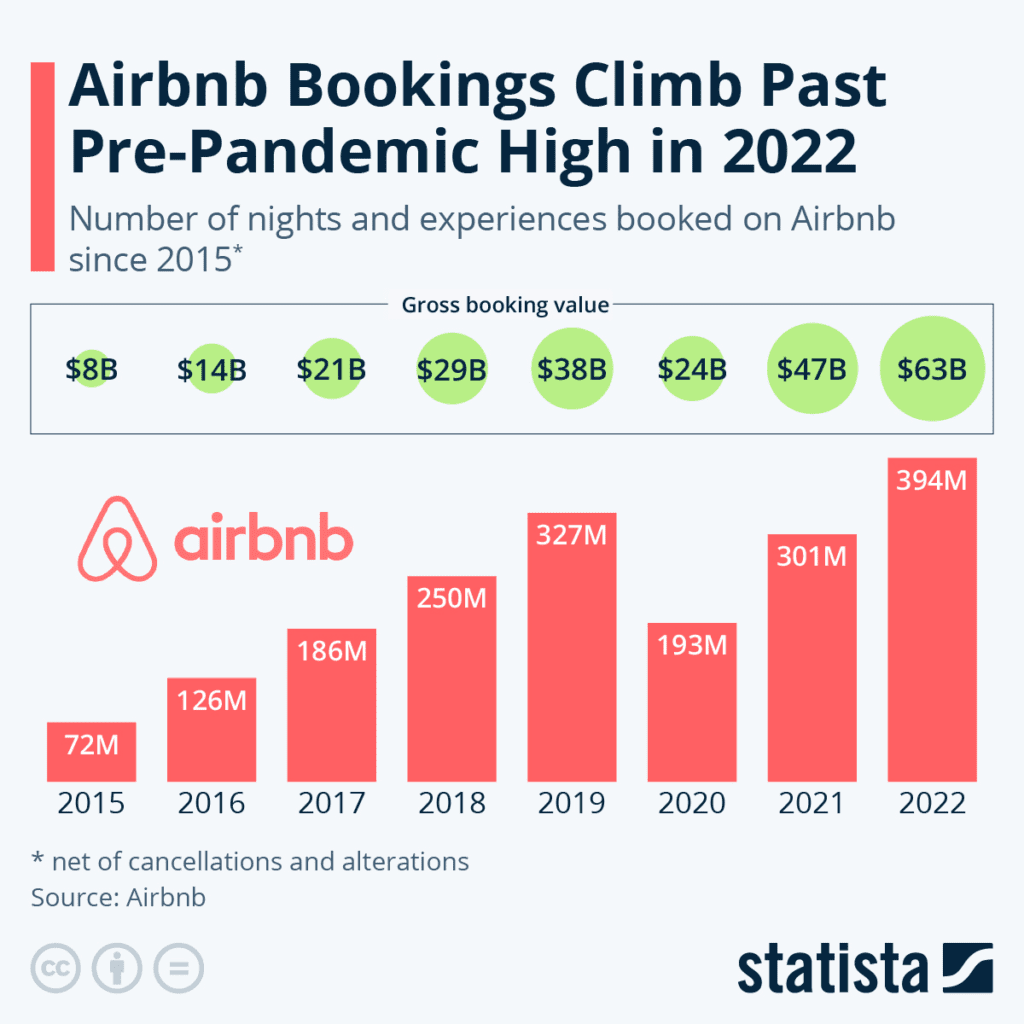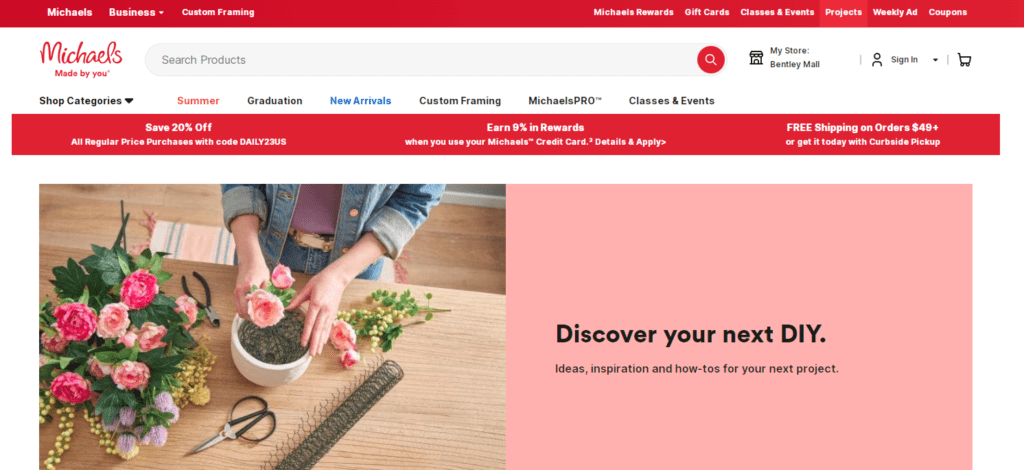Empathy In Marketing – The Key To Creating Meaningful Conversations
Consistently creating content for your brand is challenging, no doubt! But what’s even more challenging is creating content that connects with your audience. There’s one secret ingredient that makes this possible – empathy. Empathy in marketing is not a nice-to-have element but a strategic imperative that can transform your brand image.

While some businesses keep complaining about the ever-growing competition in their industry and the ever-changing marketing landscape, some manage to stay on top of their game. How do they do it? By focusing on creating deeper and more meaningful connections with their consumers. Empathy in marketing helps them achieve that.
Because by empathizing with your customers you understand what they are looking for, what they are talking about, and what they care about. These little hints can drastically change the way you create ads. And they ensure that your ads don’t feel like ads.
But yes, empathy in marketing does sound somewhat hazy. We get it. So, let’s break it down. In this blog, we’ll talk all about the benefits of empathetic marketing along with a few examples from brands that adopt this approach.
Empathy in marketing – 7 benefits of putting yourself in your customer’s shoes
1. Enhance customer experience
Do you know the difference between ads that cost a fortune but fade away without a trace and those that make a mark? Empathy, of course. When the ad carries a message that your customers can relate to, your ad creates an impact. It creates a strong first impression and also lays down the foundation for better customer experiences.
Customer experience starts with creating marketing campaigns that align with your customer’s sentiments. And empathy in marketing helps you work on more customer-centric campaigns. Some brands build their whole marketing strategy around better customer service through empathy rather than just single campaigns. Starbucks is one such brand. Want to know how? Let’s find out.
There are many coffee shops and coffee shop chains around the world. To stand out, Starbucks wanted to deliver customers something more than coffee. Because it knows that coffee shops are part of the lifestyle for several customers. That’s why the brand aims at delivering a personalized experience to each customer.
The brand even has special training programs for its employees so as to train them to be empathetic with every customer that visits the store. Starbucks also encourages empathy through community service activities involving its employees.
The below post shows how the partners (employees) at a Starbucks store raised funds to donate to a local non-profit organization.
On top of all this, the brand also shares fun and relatable content on social media. Scrolling through the content you will realize that ideas like those are possible only when you learn to empathize with your customers and also with your employees for that matter.
2. Navigate crisis situations
One of the least talked-about benefits of advocating empathy in marketing is its power in helping brands navigate crisis. When you empathize with your customers in times of crisis, they empathize with your brand. And times like the COVID pandemic prove that this mutual empathy can go a long way in helping a brand stay alive and emerge post such unprecedented times.
To understand this idea better, we’ll give you an example. In the early stages of the pandemic, there were lockdowns worldwide and this took a toll on businesses that had a majority of their operations offline. It’s a well-known fact that the tourism industry was one of the worst hit. The global revenue of the tourism industry in 2020 was about 42.1% lower than that in 2019.
So, how did some businesses like Airbnb manage to sustain and bounce back to their spot even after a crisis situation? You guessed it right – by exercising empathy!
Firstly, Airbnb introduced considerate cancellation policies for rental bookings canceled due to the pandemic lockdown. This ensured that customers who could not execute their travel plans due to travel restrictions did not face huge financial losses.
Another major concern during the pandemic was that some frontline responders were having trouble finding rentals. As a measure to respond to this situation, Airbnb introduced convenient short-term stays for frontline responders.
Steps like these helped Airbnb stay connected with its customers even when a crisis hit. Yes, the company still had to size down its workforce and face losses. But steps like these helped the brand retain its loyal customers and also win the hearts of new customers. As a result, Airbnb’s bookings bounced back quickly after the pandemic. (as you can see in the below graph)
3. Social recognition for the brand
Becoming popular on digital channels can significantly boost a brand’s stance in its segment. It is also an effective way of building brand recognition. That’s one of the reasons why brands struggle to go viral on social media. Because when they do, their brand reaches a wider audience and more people start talking about the brand and recognizing it.
Empathy in marketing helps achieve brand recognition, especially in the social media space. Because empathy-driven content gets shared a lot and also gets good engagement. It further leads to an increase in brand mentions on social media thus grabbing more eyeballs and bringing new leads for the brand.
The #LikeAGirl campaign by Always is a good example of how empathy can help create content for social media recognition. The campaign addresses the common stereotypes associated with the phrase “Like a girl” and empathizes with women who hate these insults. The campaign was to stand with the 72% of the surveyed girls who felt that society limits them.
Within a short time, the video reached 70 million views, and more than 4.4 billion media impressions. This impressive response was because the brand empathized with its customers.
4. Community building
One of the biggest benefits of using empathy in marketing is the increased efficiency in building a community.
Building a strong community benefits a brand in many ways. In fact, it goes one step above building brand loyalty. When you manage to create a community of like-minded folks you are:
- Nurturing long-term customer relationships
- Increasing trust in your brand
- Opening more channels for instant customer feedback
- Increasing brand mentions
- Bringing new leads
- Building product evangelism
Let’s look at an example that proves these points. Finding inspiration and finding the right platforms to share their creative work are some of the biggest challenges faced by crafters and art enthusiasts. Michaels Stores, Inc., the well know art and crafts chain empathizes with this struggle of crafters. Therefore, the brand built a strong online community for art enthusiasts.
From sharing DIY projects to giving a shoutout to crafters, the brand does its bit in many ways. Michaels has a whole section of DIY projects on its website.
On the part about giving creators a platform to showcase their creations, Michaels effectively uses its social media pages. Apart from regularly sharing user content on its Instagram Feed, the brand also runs various themed campaigns to engage its community of crafters.
KIMP Tip: As you can see in the above example, social media is a great place for your brand to exercise empathy and build a strong community. For this regular interactions through Feed posts and Story posts are very much important.
Finding it hard to keep up with the consistent need for social media designs? Get KIMP!
5. Foster a positive brand image
Fostering positive brand associations and therefore building a strong brand image becomes easier with empathy in marketing.
Dove’s success with its Real Beauty campaigns is one of the perfect examples that show how empathy fosters a positive brand image. Here’s a little background.
The beauty industry has paved the way toward unrealistic beauty standards and this drastically affects the way women and teenage girls perceive beauty. To tackle this and to help improve self-esteem in women, the brand came up with the Dove Campaign for Real Beauty. There were a series of ads created in all formats and for all platforms to depict more realistic versions of beauty.
The below video, for example, showed the amount of makeup and photo manipulation that goes into the creation of the perfect beauty ad. The purpose of the ad is to deliver the message of Real Beauty. The brand also conducted Real Beauty workshops to help girls connect with a more realistic version of themselves and to embrace natural beauty.
Over the years, campaigns like these have helped Dove build a strong brand image for itself in the competitive beauty industry. And this was only possible because the brand empathized with all the women falling prey to the unrealistic image of beauty that the industry creates.
KIMP Tip: A message so strong cannot be delivered in just one ad. It takes years of consistent efforts especially when it targets something concrete like shaping a brand image. Like Dove, you need to use a mix of ads in various formats and focus on various marketing platforms to achieve the intended results.
Want to create ads that look consistently on-brand on all platforms? Get an unlimited design subscription and work with a designated design team.
6. Diversify and branch out with confidence
“Empathy makes you a better innovator” – Microsoft CEO, Satya Nadella
Are you wondering how introducing new product lines and diversifying your brands and empathy are connected? We’ll tell you.
What does it take for a new product line to be successful? A warm reception from your audience correct? And when does this happen? When the product you introduce creates value for your customers or when it solves their problems and meets their expectations. And how do you come up with product ideas that fit these descriptions? By listening to and empathizing with your customers, of course.
Nike’s successful sub-brand, ACG is a good example of using empathy in marketing to diversify your brand and grow. The ACG (All Conditions Gear) line of footwear and accessories from Nike was introduced for all those customers who loved the quality and style that Nike offers but wished for a more rugged and more durable version of it.
The idea or the purpose behind creating ACG was to create gear that delivers the right amount of protection in all conditions. It was to deliver what customers look for in outdoor gear – practical and reliable designs that feel comfortable and look good too.
The brand was able to diversify and see success with its new line of outdoor fear because the focus was more customer-centric and purpose-driven.
7. Brand differentiation
Empathy in marketing helps you stand out from your competitors. Because when customers notice that your brand message is aligned with their emotions and values, they are inspired to take the next step. In fact, data shows that about 81% of consumers find trust in a brand to be one of the most influential factors in purchase decisions.
Additionally, with empathy in marketing, you will also be able to personalize customer experiences as we saw in the case of Starbucks. This helps your brand to be remembered and recognized even amidst stiff competition.
For example, Warby Parker is a popular eyewear brand that has managed to tackle a competitive market for several years now. With effective brand differentiation, Warby Parker has carved a niche for itself in the affordable eyewear segment.
The brand’s success can be attributed to a combination of factors a majority of which have empathy as the core element.
For example, take the brand’s direct-to-consumer model for example. This strategy has been a hit and has helped the brand keep its eyewear prices low and competitive. It works because the strategy comes as a direct answer to the increased cost of eyewear when involving middlemen and retail channels. By empathizing with its customers and understanding their struggle in finding quality eyewear at affordable rates, the brand has managed to set itself apart.
Additionally, Warby Parker addresses the problems of finding the right fitting and the right frame while ordering glasses online. Adopting empathy in marketing, the brand introduced its home try-on program where customers can select up to five frames and get a home try-on before placing their order.
Little brand-differentiating features like these have been possible for Warby Parker only because of empathizing with its customers.
Execute your empathy-driven marketing ideas with KIMP
As you can see from the above benefits, empathy in marketing goes a long way in:
- Strengthening your brand’s reputation
- Nurturing long-term customer relationships
- And differentiating your brand in a competitive market
To experience these benefits you need to be sure that every static image and video you post on social media and every print ad you design execute the core idea effectively and consistently. Working with a professional design team simplifies this process. It also helps you stick with on-brand content that carries a message tailored to resonate with customer sentiments.
Talking about professional a design team, an unlimited design subscription helps you cut back on the cost involved in hiring an in-house team while also experiencing the strengths of a designated design team. Register now for a free 7-day trial of KIMP and find out how.




